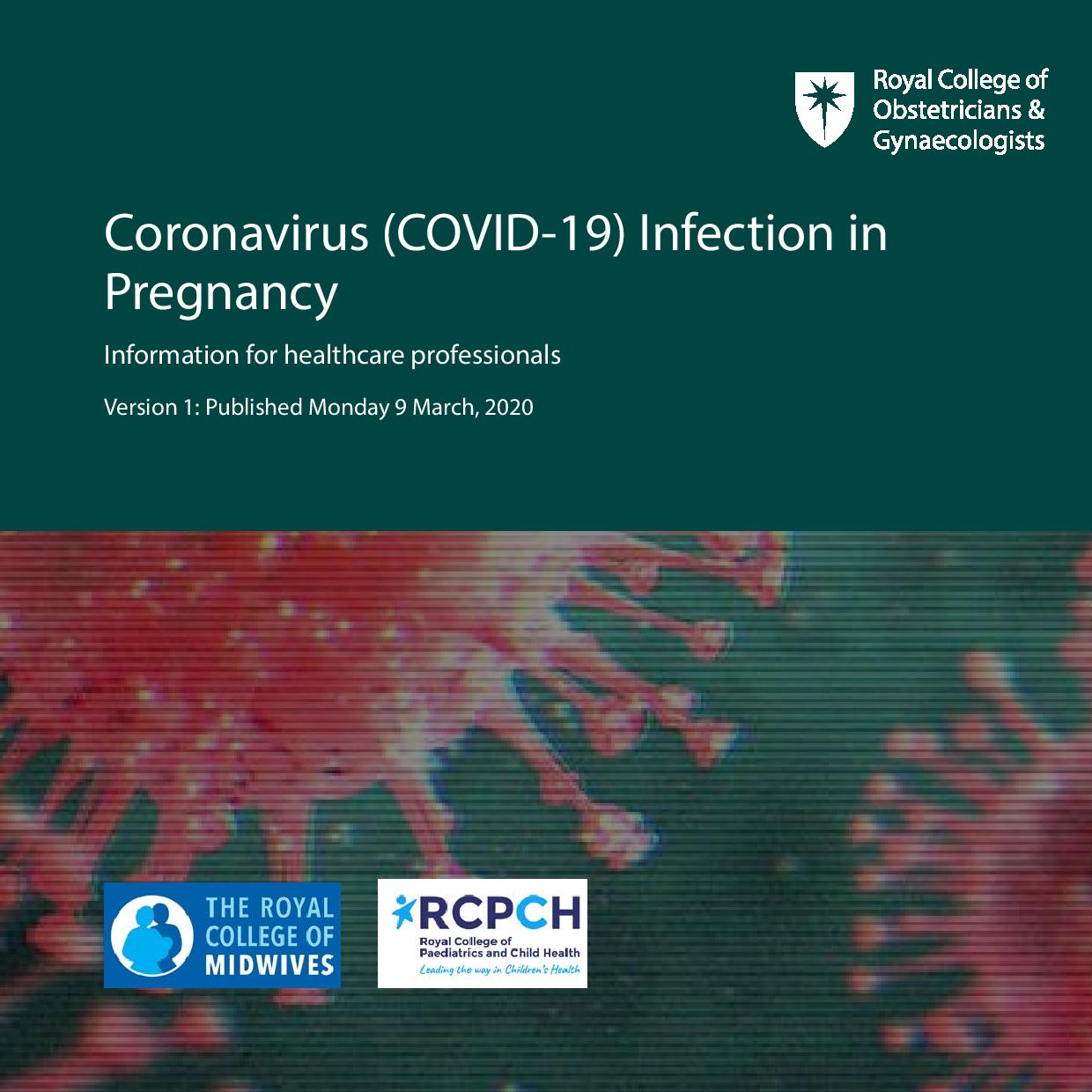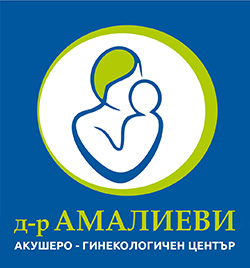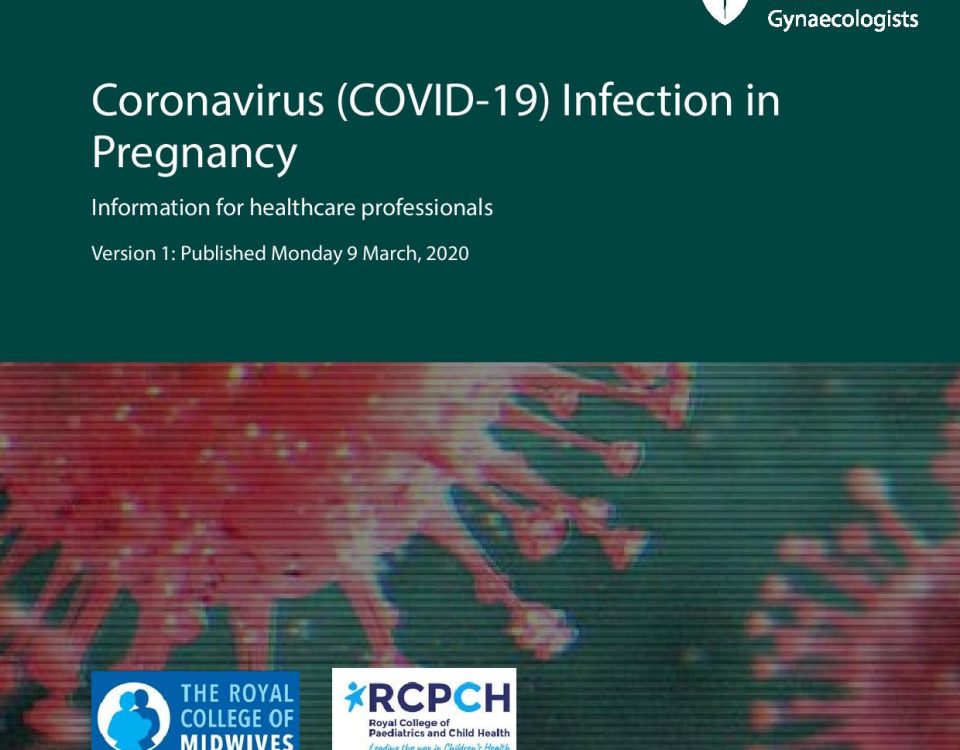
Coronavirus (COVID-19) Infection in Pregnancy
11.03.2020The novel coronavirus infection (COVID‐19) is a global public health emergency. Since the first case of COVID‐19 pneumonia was reported in Wuhan, Hubei Province, China, in December 2019, the infection has spread rapidly to the rest of China and beyond. As of 1st March 2020, a total of 85 406 confirmed cases of COVID‐19 infection have been reported, together with 39 597 recovered and discharged patients and 2933 deaths1.
Huang et al.2 first reported a cohort of 41 patients with laboratory‐confirmed COVID‐19 pneumonia. They described the epidemiological, clinical, laboratory and radiological characteristics, as well as treatment and clinical outcome of the patients. Subsequent studies with larger sample sizes have shown similar findings3, 4. The diagnosis of COVID‐19 pneumonia is based on epidemiological exposure, clinical manifestation, laboratory results, findings on computed tomography (CT) of the chest and a positive COVID‐19 test result based on quantitative reverse transcription polymerase chain reaction (qRT‐PCR) analysis of specimens acquired from the respiratory tract. However, the fifth edition of the ‘New coronavirus pneumonia prevention and control program’ guideline5 has stated that, in the worst‐hit areas in China (Hubei Province), suspected cases with typical chest CT findings may be diagnosed clinically with COVID‐19 pneumonia, as the qRT‐PCR test has a false‐negative rate of at least 30%. Thus, in our opinion, in the worst‐hit areas, in addition to using nucleic acid tests as the gold standard for diagnosis of COVID‐19 pneumonia, a combination of laboratory results, chest CT findings and a comprehensive evaluation of the patient's medical history, epidemiological exposure and symptoms are of great importance.
Pregnancy is a physiological state that predisposes women to viral infection. Over and above the impact of COVID‐19 infection on a pregnant woman, there are concerns relating to the potential effect on fetal and neonatal outcome; therefore, pregnant women constitute a group that requires special attention in relation to prevention, diagnosis and management. In this Opinion, we review the clinical manifestation, neonatal outcome and risk of vertical transmission of COVID‐19 infection during pregnancy.
Clinical manifestation of COVID‐19 infection during pregnancy
Due to the physiological changes in their immune and cardiopulmonary systems, pregnant women are more likely to develop severe illness after infection with respiratory viruses. In 2009, pregnant women accounted for 1% of patients infected with influenza A subtype H1N1 virus, but they accounted for 5% of all H1N1‐related deaths6. In addition, severe acute respiratory syndrome coronavirus (SARS‐CoV) and Middle East respiratory syndrome coronavirus (MERS‐CoV), two notable strains of the coronavirus family, are both known to be responsible for severe complications during pregnancy, including the need for endotracheal intubation, admission to an intensive care unit (ICU), renal failure and death7, 8. Interestingly, the impact of COVID‐19 infection on pregnant women appears to be less severe. Chen et al.9 reported the clinical characteristics of nine pregnant women with laboratory‐confirmed COVID‐19 in the third trimester, which comprised mainly fever and cough. Other symptoms included myalgia, malaise, sore throat, diarrhea and shortness of breath. Data from laboratory tests showed that the majority of patients had lymphopenia and increased C‐reactive protein, and chest CT scans showed multiple patchy ground‐glass shadows in the lungs. Pregnancy complications that appeared after the onset of COVID‐19 infection included fetal distress in two of nine patients and premature rupture of the membranes in two of nine patients. None of the patients developed severe COVID‐19 pneumonia or died. Another series10 of nine pregnant women with COVID‐19 pneumonia presenting from mid‐trimester onwards, or during the postpartum period, reported similar findings except for one woman requiring ICU care and ventilation for acute respiratory distress syndrome after the infection was diagnosed 2 days postpartum. In general, both studies reported that the clinical characteristics of the pregnant women with COVID‐19 pneumonia were similar to those of non‐pregnant adult patients who developed COVID‐19 pneumonia2-4. These observations are also in line with what has been learned about COVID‐19 pneumonia in pregnancy in several other hospitals in Wuhan, China. Pregnant healthcare professionals should follow risk‐assessment and infection‐control guidelines following exposure to patients with suspected or confirmed COVID‐19. Adherence to recommended infection prevention and control practices is an important part of protecting all healthcare professionals in clinical settings11.
Perinatal outcome and risk of vertical transmission in pregnancy with COVID‐19 infection Of major concern is whether the virus can be transmitted from mother to baby. In the study by Chen et al.9, of nine pregnant women with COVID‐19 in the third trimester, no fetal death, neonatal death or neonatal asphyxia was observed9. Although four neonates were born prematurely, none of these deliveries was related directly to COVID‐19 infection. All newborns had an Apgar score ≥ 9 at 5 min. Amniotic fluid, cord blood and neonatal throat‐swab samples collected from six patients tested negative for COVID‐19, suggesting there was no evidence of intrauterine infection caused by vertical transmission in women who developed COVID‐19 pneumonia in late pregnancy. Furthermore, it appears that there is no risk of vertical transmission via breastfeeding. The same study confirmed that the virus was not detected in the colostrum of COVID‐19‐infected patients. However, as the virus is transmitted via close contact, currently in China, all newborns are separated from their infected mothers for at least 14 days, which makes direct breastfeeding unfeasible. The mothers are, however, advised to express their breastmilk in order to maintain milk production. Once they test negative for COVID‐19, they are then able to breastfeed their infant.
All nine of these pregnant women underwent Cesarean delivery as they were symptomatic with COVID‐19 pneumonia in the third trimester of pregnancy. The time interval from the clinical manifestation of COVID‐19 infection to Cesarean delivery was short (range, 1–7 days). It is therefore uncertain whether there is a risk of vertical transmission if the clinical manifestation‐to‐delivery interval is more than 7 days. Although previous studies have reported no evidence of congenital infection with SARS‐CoV12, currently there are no data on fetal and perinatal complications, such as miscarriage, congenital anomalies, fetal growth restriction and spontaneous preterm birth, when COVID‐19 infection is acquired during the first or early second trimester of pregnancy. A recent study by Zheng et al.13 demonstrated that the receptor, angiotensin‐converting enzyme 2 (ACE2), of COVID‐19 has very low expression in almost all cell types of the early maternal–fetal interface, suggesting that there may be no cells that are potentially susceptible to COVID‐19 in the maternal–fetal interface. It is, therefore, probable that COVID‐19 infection during pregnancy cannot lead to transplacental vertical transmission. We acknowledge that available clinical data on COVID‐19 infection in pregnancy are limited at present, and most cases on which data are available presented in the third trimester of pregnancy. There is, therefore, a need to continue collecting data on clinical cases of COVID‐19 infection in pregnancy, and to improve our understanding of the course of the disease throughout pregnancy.
Intrapartum care
COVID‐19 infection is highly contagious and this must be taken into consideration when planning intrapartum care. It is unclear whether, for the safety of both baby and healthcare professionals, a pregnant woman with COVID‐19 infection should be allowed to deliver vaginally, which can be a rather long process. There have not yet been any studies examining whether COVID‐19 infection can be transmitted during delivery. Future research could explore whether vaginal delivery increases the risk of transmission from mother to child during delivery by testing vaginal secretions. Since COVID‐19 itself is transmitted mainly through respiratory droplets and by close contact, if a newborn is in close contact with an infected mother, contact infection is likely to occur. It has been reported that the youngest patient with COVID‐19 infection was diagnosed 36 h after birth9. Particular attention, therefore, should be paid to the protection of neonates born to women with COVID‐19 infection.
In our opinion, in the event that an infected woman has spontaneous onset of labor with optimal progress, provided that appropriate preventative measures are in place, she could be allowed to deliver vaginally, but with a shortened second stage, as active pushing while wearing a surgical mask would be unfeasible. Regarding a pregnant woman without a diagnosis of COVID‐19 infection, but who might be a silent carrier of the virus, we urge caution regarding the practice of active pushing while wearing a surgical mask, as it is unclear whether there might be an increased risk of exposure to any healthcare professional attending the delivery without full personal protective equipment, because forceful exhalation may significantly reduce the effectiveness of a mask in preventing the spread of the virus by respiratory droplets. It is therefore crucial to acquire a detailed history from the mother regarding travel, occupation, contact and cluster (TOCC). For a woman with TOCC risk factors but without a diagnosis of COVID‐19 infection, appropriate precautions should be taken.
Summary
In summary, based on the available clinical and research data, the clinical characteristics of patients with COVID‐19 infection presenting from mid‐trimester onwards are similar to those of non‐pregnant adults. Currently, there is no evidence that pregnant women are more susceptible to COVID‐19 infection and that those with COVID‐19 infection are more prone to developing severe pneumonia. There is also no evidence of vertical mother‐to‐baby transmission of COVID‐19 infection when the maternal infection manifests in the third trimester. Our opinions are in line with the recommendations of the Centers for Disease Control and Prevention11. COVID‐19 infection should not be the sole indication for delivery; rather, the patient should be duly assessed, and management, timing and mode of delivery should be individualized, dependent mainly on the clinical status of the patient, gestational age and fetal condition14. Ongoing collection of clinical data and research is underway with the aim of answering questions in relation to the risk of congenital infection and the optimal intrapartum management, and timing and mode of delivery. Lastly, we would like to pay tribute to all frontline medical professionals who are working tirelessly to bring the COVID‐19 epidemic under control.
Source: https://obgyn.onlinelibrary.wiley.com/doi/10.1002/uog.22006#.Xmx8BCfSf2Y.facebook
Huang et al.2 first reported a cohort of 41 patients with laboratory‐confirmed COVID‐19 pneumonia. They described the epidemiological, clinical, laboratory and radiological characteristics, as well as treatment and clinical outcome of the patients. Subsequent studies with larger sample sizes have shown similar findings3, 4. The diagnosis of COVID‐19 pneumonia is based on epidemiological exposure, clinical manifestation, laboratory results, findings on computed tomography (CT) of the chest and a positive COVID‐19 test result based on quantitative reverse transcription polymerase chain reaction (qRT‐PCR) analysis of specimens acquired from the respiratory tract. However, the fifth edition of the ‘New coronavirus pneumonia prevention and control program’ guideline5 has stated that, in the worst‐hit areas in China (Hubei Province), suspected cases with typical chest CT findings may be diagnosed clinically with COVID‐19 pneumonia, as the qRT‐PCR test has a false‐negative rate of at least 30%. Thus, in our opinion, in the worst‐hit areas, in addition to using nucleic acid tests as the gold standard for diagnosis of COVID‐19 pneumonia, a combination of laboratory results, chest CT findings and a comprehensive evaluation of the patient's medical history, epidemiological exposure and symptoms are of great importance.
Pregnancy is a physiological state that predisposes women to viral infection. Over and above the impact of COVID‐19 infection on a pregnant woman, there are concerns relating to the potential effect on fetal and neonatal outcome; therefore, pregnant women constitute a group that requires special attention in relation to prevention, diagnosis and management. In this Opinion, we review the clinical manifestation, neonatal outcome and risk of vertical transmission of COVID‐19 infection during pregnancy.
Clinical manifestation of COVID‐19 infection during pregnancy
Due to the physiological changes in their immune and cardiopulmonary systems, pregnant women are more likely to develop severe illness after infection with respiratory viruses. In 2009, pregnant women accounted for 1% of patients infected with influenza A subtype H1N1 virus, but they accounted for 5% of all H1N1‐related deaths6. In addition, severe acute respiratory syndrome coronavirus (SARS‐CoV) and Middle East respiratory syndrome coronavirus (MERS‐CoV), two notable strains of the coronavirus family, are both known to be responsible for severe complications during pregnancy, including the need for endotracheal intubation, admission to an intensive care unit (ICU), renal failure and death7, 8. Interestingly, the impact of COVID‐19 infection on pregnant women appears to be less severe. Chen et al.9 reported the clinical characteristics of nine pregnant women with laboratory‐confirmed COVID‐19 in the third trimester, which comprised mainly fever and cough. Other symptoms included myalgia, malaise, sore throat, diarrhea and shortness of breath. Data from laboratory tests showed that the majority of patients had lymphopenia and increased C‐reactive protein, and chest CT scans showed multiple patchy ground‐glass shadows in the lungs. Pregnancy complications that appeared after the onset of COVID‐19 infection included fetal distress in two of nine patients and premature rupture of the membranes in two of nine patients. None of the patients developed severe COVID‐19 pneumonia or died. Another series10 of nine pregnant women with COVID‐19 pneumonia presenting from mid‐trimester onwards, or during the postpartum period, reported similar findings except for one woman requiring ICU care and ventilation for acute respiratory distress syndrome after the infection was diagnosed 2 days postpartum. In general, both studies reported that the clinical characteristics of the pregnant women with COVID‐19 pneumonia were similar to those of non‐pregnant adult patients who developed COVID‐19 pneumonia2-4. These observations are also in line with what has been learned about COVID‐19 pneumonia in pregnancy in several other hospitals in Wuhan, China. Pregnant healthcare professionals should follow risk‐assessment and infection‐control guidelines following exposure to patients with suspected or confirmed COVID‐19. Adherence to recommended infection prevention and control practices is an important part of protecting all healthcare professionals in clinical settings11.
Perinatal outcome and risk of vertical transmission in pregnancy with COVID‐19 infection Of major concern is whether the virus can be transmitted from mother to baby. In the study by Chen et al.9, of nine pregnant women with COVID‐19 in the third trimester, no fetal death, neonatal death or neonatal asphyxia was observed9. Although four neonates were born prematurely, none of these deliveries was related directly to COVID‐19 infection. All newborns had an Apgar score ≥ 9 at 5 min. Amniotic fluid, cord blood and neonatal throat‐swab samples collected from six patients tested negative for COVID‐19, suggesting there was no evidence of intrauterine infection caused by vertical transmission in women who developed COVID‐19 pneumonia in late pregnancy. Furthermore, it appears that there is no risk of vertical transmission via breastfeeding. The same study confirmed that the virus was not detected in the colostrum of COVID‐19‐infected patients. However, as the virus is transmitted via close contact, currently in China, all newborns are separated from their infected mothers for at least 14 days, which makes direct breastfeeding unfeasible. The mothers are, however, advised to express their breastmilk in order to maintain milk production. Once they test negative for COVID‐19, they are then able to breastfeed their infant.
All nine of these pregnant women underwent Cesarean delivery as they were symptomatic with COVID‐19 pneumonia in the third trimester of pregnancy. The time interval from the clinical manifestation of COVID‐19 infection to Cesarean delivery was short (range, 1–7 days). It is therefore uncertain whether there is a risk of vertical transmission if the clinical manifestation‐to‐delivery interval is more than 7 days. Although previous studies have reported no evidence of congenital infection with SARS‐CoV12, currently there are no data on fetal and perinatal complications, such as miscarriage, congenital anomalies, fetal growth restriction and spontaneous preterm birth, when COVID‐19 infection is acquired during the first or early second trimester of pregnancy. A recent study by Zheng et al.13 demonstrated that the receptor, angiotensin‐converting enzyme 2 (ACE2), of COVID‐19 has very low expression in almost all cell types of the early maternal–fetal interface, suggesting that there may be no cells that are potentially susceptible to COVID‐19 in the maternal–fetal interface. It is, therefore, probable that COVID‐19 infection during pregnancy cannot lead to transplacental vertical transmission. We acknowledge that available clinical data on COVID‐19 infection in pregnancy are limited at present, and most cases on which data are available presented in the third trimester of pregnancy. There is, therefore, a need to continue collecting data on clinical cases of COVID‐19 infection in pregnancy, and to improve our understanding of the course of the disease throughout pregnancy.
Intrapartum care
COVID‐19 infection is highly contagious and this must be taken into consideration when planning intrapartum care. It is unclear whether, for the safety of both baby and healthcare professionals, a pregnant woman with COVID‐19 infection should be allowed to deliver vaginally, which can be a rather long process. There have not yet been any studies examining whether COVID‐19 infection can be transmitted during delivery. Future research could explore whether vaginal delivery increases the risk of transmission from mother to child during delivery by testing vaginal secretions. Since COVID‐19 itself is transmitted mainly through respiratory droplets and by close contact, if a newborn is in close contact with an infected mother, contact infection is likely to occur. It has been reported that the youngest patient with COVID‐19 infection was diagnosed 36 h after birth9. Particular attention, therefore, should be paid to the protection of neonates born to women with COVID‐19 infection.
In our opinion, in the event that an infected woman has spontaneous onset of labor with optimal progress, provided that appropriate preventative measures are in place, she could be allowed to deliver vaginally, but with a shortened second stage, as active pushing while wearing a surgical mask would be unfeasible. Regarding a pregnant woman without a diagnosis of COVID‐19 infection, but who might be a silent carrier of the virus, we urge caution regarding the practice of active pushing while wearing a surgical mask, as it is unclear whether there might be an increased risk of exposure to any healthcare professional attending the delivery without full personal protective equipment, because forceful exhalation may significantly reduce the effectiveness of a mask in preventing the spread of the virus by respiratory droplets. It is therefore crucial to acquire a detailed history from the mother regarding travel, occupation, contact and cluster (TOCC). For a woman with TOCC risk factors but without a diagnosis of COVID‐19 infection, appropriate precautions should be taken.
Summary
In summary, based on the available clinical and research data, the clinical characteristics of patients with COVID‐19 infection presenting from mid‐trimester onwards are similar to those of non‐pregnant adults. Currently, there is no evidence that pregnant women are more susceptible to COVID‐19 infection and that those with COVID‐19 infection are more prone to developing severe pneumonia. There is also no evidence of vertical mother‐to‐baby transmission of COVID‐19 infection when the maternal infection manifests in the third trimester. Our opinions are in line with the recommendations of the Centers for Disease Control and Prevention11. COVID‐19 infection should not be the sole indication for delivery; rather, the patient should be duly assessed, and management, timing and mode of delivery should be individualized, dependent mainly on the clinical status of the patient, gestational age and fetal condition14. Ongoing collection of clinical data and research is underway with the aim of answering questions in relation to the risk of congenital infection and the optimal intrapartum management, and timing and mode of delivery. Lastly, we would like to pay tribute to all frontline medical professionals who are working tirelessly to bring the COVID‐19 epidemic under control.
Source: https://obgyn.onlinelibrary.wiley.com/doi/10.1002/uog.22006#.Xmx8BCfSf2Y.facebook
REFERENCES
1 Coronavirus COVID‐19 Global Cases. Johns Hopkins CSSE. https://gisanddata.maps.arcgis.com/apps/opsdashboard/index.html#/bda7594740fd40299423467b48e9ecf6 [Accessed 1 March 2020]. Google Scholar
2 Huang C, Wang Y, Li X, Ren L, Zhao J, Hu Y, Zhang L, Fan G, Xu J, Gu X, Cheng Z, Yu T, Xia J, Wei Y, Wu W, et al. Clinical features of patients infected with 2019 novel coronavirus in Wuhan, China. Lancet 2020; 395: 497– 506. CrossrefCASPubMedWeb of Science®Google Scholar
3 Wang D, Hu B, Hu C, Zhu F, Liu X, Zhang J, Wang B, Xiang H, Cheng Z, Xiong Y, Zhao Y, Li Y, Wang X, Peng Z. Clinical characteristics of 138 hospitalized patients with 2019 novel coronavirus infected pneumonia in Wuhan, China. JAMA 2020. DOI: 10.1001/jama.2020.1585. CrossrefGoogle Scholar
4 Guan W, Ni Z, Hu Y, Liang W, Ou C, He J, Liu L, Shan H, Lei C, Hui DSC, Du B, Li L, Zeng G, Yuen K, Chen R, et al., for the China Medical Treatment Expert Group for Covid‐19. Clinical Characteristics of Coronavirus Disease 2019 in China. N Engl J Med 2020. DOI: 10.1056/NEJMoa2002032. CrossrefGoogle Scholar
5 New coronavirus pneumonia prevention and control program (5th edn.) (in Chinese). 2020. http://www.nhc.gov.cn/yzygj/s7653p/202002/d4b895337e19445f8d728fcaf1e3e13a/files/ab6bec7f93e64e7f998d802991203cd6.pdf. Google Scholar
6 Siston AM, Rasmussen SA, Honein MA, Fry AM, Seib K, Callaghan WM, Louie J, Doyle TJ, Crockett M, Lynfield R, Moore Z, Wiedeman C, Anand M, Tabony L, Nielsen CF, et al.; Pandemic H1N1 Influenza in Pregnancy Working Group. Pandemic 2009 influenza A(H1N1) virus illness among pregnant women in the United States. JAMA 2010; 303: 1517– 1525. CrossrefCASPubMedWeb of Science®Google Scholar
7 Wong SF, Chow KM, Leung TN, Ng WF, Ng TK, Shek CC, Ng PC, Lam PW, Ho LC, To WW, Lai ST, Yan WW, Tan PY. Pregnancy and perinatal outcomes of women with severe acute respiratory syndrome. Am J Obstet Gynecol 2004; 191: 292– 297. CrossrefPubMedWeb of Science®Google Scholar
8 Alfaraj SH, Al‐Tawfiq JA, Memish ZA. Middle East respiratory syndrome coronavirus (MERS‐CoV) infection during pregnancy: report of two cases & review of the literature. J Microbiol Immunol Infect 2019; 52: 501– 503. CrossrefPubMedGoogle Scholar
9 Chen H, Guo J, Wang C, Luo F, Yu X, Zhang W, Li J, Zhao D, Xu D, Gong Q, Liao J, Yang H, Hou W, Zhang Y. Clinical characteristics and intrauterine vertical transmission potential of COVID‐19 infection in nine pregnant women: a retrospective review of medical records. Lancet 2020. https://doi.org/10.1016/S0140‐6736(20)30360‐3. CrossrefGoogle Scholar
10 Lei D, Wang C, Li C, Fang C, Yang W, Cheng B, Wei M, Xu X, Yang H, Wang S, Fan C. Clinical characteristics of pregnancy with the 2019 novel coronavirus disease (COVID‐19) infection. Chin J Perinat Med 2020; 23 ( 3). Google Scholar
11 Centers for Disease Control and Prevention. Coronavirus Disease 2019 (COVID‐19). Pregnant Women. https://www.cdc.gov/coronavirus/2019‐ncov/specific‐groups/pregnancy‐faq.html [Accessed 1 March 2020]. Google Scholar
12 Shek CC, Ng PC, Fung GP, Cheng FW, Chan PK, Peiris MJ, Lee KH, Wong SF, Cheung HM, Li AM, Hon EK, Yeung CK, Chow CB, Tam JS, Chiu MC, Fok TF. Infants born to mothers with severe acute respiratory syndrome. Pediatrics 2003; 112: e254. CrossrefPubMedWeb of Science®Google Scholar
13 Zheng QL, Duan T, Jin LP. Single‐cell RNA expression profiling of ACE2 and AXL in the human maternal–fetal interface. Reprod Dev Med 2020. http://www.repdevmed.org/preprintarticle.asp?id=278679 Google Scholar
14 Qi H, Chen D, Feng L, Zou L, Li J. Obstetric considerations on delivery issues for pregnant women with COVID‐19 infection. Chin J Obstet Gynecol 2020; 55: E001– E001. Google Scholar



